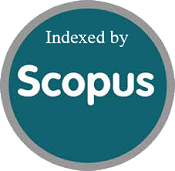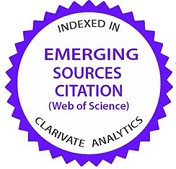Effects of different application ratios of biochar-organic compound fertilizers and chemical fertilizers on soil nutrition content and yield of maize
Abstract
Overuse of traditional chemical fertilizers may result in environmental pollution and a decrease in the quality of farm produce. By contrast, applying biochar-organic compound fertilizers can enhance soil structure, increase soil fertility, and mitigate pollution levels. This study explores the intricate mechanisms of the combined application of biochar-organic compound fertilizers and chemical fertilizers on soil chemical properties and corn growth. The aim is to elucidate the theoretical foundations supporting the widespread adoption of biochar-organic compound fertilizers. A total of 6 treatments were set up, among which the CK treatment did not apply fertilizer, the CF treatment used bovine excrement organic fertilizer combined with chemical fertilizer, the T1 to T4 treatments used biochar-organic compound fertilizers and replaced 40%, 60%, 80%, and 100% bovine excrement organic fertilizer combined with chemical fertilizer. The results showed that applying biochar-organic compound fertilizers enhanced the slow-release properties of soil available nutrients, increased corn yield, and improved grain quality. Notably, when biochar-organic compound fertilizers were employed instead of 100% bovine excrement organic fertilizer, the yield surpassed that of other treatments, exhibiting a remarkable 9.30% increase compared to the CF treatment. Through comprehensive analysis, it was determined that using biochar-organic compound fertilizer to replace 60% of bovine excrement organic fertilizer is a scheme that can balance both fertilizer efficacy and cost and is recommended to farmers. This research can contribute to promoting the green transformation of agriculture and help achieve the goal of "carbon neutrality".
Keywords
Full Text:
PDFReferences
Bao, S. (2000). Soil Agrochemical Analysis (3rd ed.). China Agriculture Press.
Cao, Z. (2019). Biochar and soil remediation technologies and their research development in tobacco industry. Acta Tabacaria Sinica, 25(3), 1-12. https://doi.org/10.16472/j.chinatobacco.2019.058
Chen, K., Peng, J., Li, J., Yang, Q., Zhan, X., Liu, N., & Han, X. (2020). Stabilization of soil aggregate and organic matter under the application of three organic resources and biochar-based compound fertilizer. Journal of Soils and Sediments, 20(10), 3633-3643. https://doi.org/10.1007/s11368-020-02693-1
Du, K., Jiao, H., Wang, X., Zhao, J., & Lin, H. (2020). The stock capacity in the manure of growing-finishing pigs based on corn planting. Acta Veterinaria et Zootechnica Sinica, 51(5), 1049–1059. https://doi.org/10.11843/j.issn.0366-6964.2020.05.016
Eisa, M., Brondi, M., Williams, C., Hejl, R., & Baltrusaitis, J. (2025). From urea to urea cocrystals: A critical view of conventional and emerging nitrogenous fertilizer materials for improved environmental sustainability. Sustainable Chemistry for the Environment, 9, 100209. https://doi.org/10.1016/j.scenv.2025.100209
Feng, W., Sánchez-Rodríguez, A. R., Bilyera, N., Wang, J., Wang, X., Han, Y., . . . Li, Y. (2024). Mechanisms of biochar-based organic fertilizers enhancing maize yield on a Chinese Chernozem: Root traits, soil quality and soil microorganisms. Environmental Technology & Innovation, 36, 103756. https://doi.org/10.1016/j.eti.2024.103756
Gao, K., Jian, M., Yu, H., Chen, P., Xie, Y., & Yu, P. (2016). Effects of pyrolysis temperatures on the biochars and its surface functional groups made from rice straw and rice husk. Environmental Chemistry, 35(8), 1663–1669. https://doi.org/10.7524/j.issn.0254-6108.2016.08.2016010607
Hou, G., Cheng, W., Shao, X., Shi, D., Jia, R., Ye, J., . . . Li, C. (2025). Effect of biochar on the growth, nutrient accumulation and yield of maize in the tropics after three years of application. Journal of Tropical Biology, 16(3), 379–388. https://doi.org/10.15886/j.cnki.rdswxb.20240057
Hu, W., Zhang, Y., Rong, X., Zhou, X., Fei, J., Peng, J., & Luo, G. (2024). Biochar and organic fertilizer applications enhance soil functional microbial abundance and agroecosystem multifunctionality. Biochar, 6(1), 3. https://doi.org/10.1007/s42773-023-00296-w
Jang, Y.-H., Park, J.-R., Kim, E.-G., & Kim, K.-M. (2022). OsbHLHq11, the Basic Helix-Loop-Helix Transcription Factor, Involved in Regulation of Chlorophyll Content in Rice. Biology, 11(7), 1000. https://doi.org/10.3390/biology11071000
Kabir, E., Kim, K.-H., & Kwon, E. E. (2023). Biochar as a tool for the improvement of soil and environment [Review]. Frontiers in Environmental Science, Volume 11 - 2023. https://doi.org/10.3389/fenvs.2023.1324533
Khalisha, A., Widyastuti, R., & Chaniago, I. A. (2022). Use of phosphorus- and potassium-solubilizing multifunctional microbes to support maize growth and yield. Sains Tanah Journal of Soil Science and Agroclimatology, 19(1), 8. https://doi.org/10.20961/stjssa.v19i1.57816
Lan, Y., Meng, J., Han, X., & Chen, W. (2024). Advances in research on biochar-based products and their effects on soil fertility improvement. Plant Nutrition and Fertilizer Science, 30(7), 1396–1412. https://doi.org/10.11674/zwyf.2024276
Li, F., Zhao, X., Qi, R., He, L., Wan, D., Zhang, J., . . . Zhang, L. (2025). Remediation of Heavy Metal Contaminated Soil by Functional Pellets of Charcoal Organic Fertilizer: Rhizosphere and Non-Rhizosphere Soil Microorganisms. Water, Air, & Soil Pollution, 236(7), 408. https://doi.org/10.1007/s11270-025-08067-y
Li, H., Fang, C., Lu, Z., & Sheng, H. (2023). Research progress on the remediation mechanism of wheat straw biochar on heavy metal contaminated soil. Advances in Environmental Protection, 13(3), 559–565. https://doi.org/10.12677/AEP.2023.133069
Li, N., Zhang, L., Wang, S., Tian, Y., Zhu, C., Song, T., & Li, H. (2025). Effects of different fertilization modes on soil nutrients—based on long-term positioning monitoring. Journal of Environmental Engineering Technology, 15(4), 1303-1310. https://doi.org/10.12153/j.issn.1674-991X.20240649
Li, Y., Ye, J., Liu, C., Lin, Y., & Wang, Y. (2024). Effects of biochar-based organic fertilizer on Cu speciation and microbial community in soils. Journal of China Agricultural University, 29(6), 219-229. https://doi.org/10.11841/j.issn.1007-4333.2024.06.22
Liu, C. (2019). Effect of biochar amendment on crop yield and greenhouse gases emission [Master’s thesis, Nanjing Agricultural University].
Liu, G., Cheng, X., Zhang, S., & Zhou, L. (2023). Farmland management scale and the effect of chemical fertilizer reduction: Evidence from rice farmers in Jiangxi Province. Research on Agricultural Modernization, 44(1), 97-107. https://doi.org/10.13872/j.1000-0275.2023.0018
Liu, X., Zhang, D., Li, H., Qi, X., Gao, Y., Zhang, Y., . . . Li, H. (2020). Soil nematode community and crop productivity in response to 5-year biochar and manure addition to yellow cinnamon soil. BMC Ecology, 20(1), 39. https://doi.org/10.1186/s12898-020-00304-8
Moi, S., Mandal, B., & Pramanick, M. (2022). Yield and economic response of Rabi maize (Zea mays L.) to different mulching and nutrient management. Environment Conservation Journal, 23(3), 108-112. https://doi.org/10.36953/ECJ.9392180
Nurmegawati, N., Iskandar, I., & Sudarsono, S. (2019). Effect of Bottom Ash and Cow Manure Compost on Chemical Properties of Soil at New-Established Rice Field. Sains Tanah Journal of Soil Science and Agroclimatology, 16(1), 12. https://doi.org/10.20961/stjssa.v16i1.22366
O'Dell, D., Eash, N. S., Zahn, J. A., Hicks, B. B., Oetting, J. N., Sauer, T. J., . . . Goddard, J. J. (2019). Nutrient Source and Tillage Effects on Maize: II. Yield, Soil Carbon, and Carbon Dioxide Emissions. Agrosystems, Geosciences & Environment, 2(1), 190036. https://doi.org/10.2134/age2019.05.0036
Pandey, A., Patel, P., Shinde, R., Jakasaniya, M., & Chaudhary, R. (2020). Effect of biochar and FYM on growth, yield and chemical composition of fodder sorghum. International Journal of Chemical Studies, 8(1). https://doi.org/10.22271/chemi.2020.v8.i1as.8722
Rombel, A., Krasucka, P., & Oleszczuk, P. (2022). Sustainable biochar-based soil fertilizers and amendments as a new trend in biochar research. Science of The Total Environment, 816, 151588. https://doi.org/10.1016/j.scitotenv.2021.151588
Shao, W., & Li, G. (2016). Research progress of soil enzymes function and its determination method. Northern Horticulture(9), 188–193. https://caod.oriprobe.com/articles/48136080/Research_Progress_of_Soil_Enzymes_Function_and_Its.htm
Singh, R., Sawatzky, S. K., Thomas, M., Akin, S., Zhang, H., Raun, W., & Arnall, D. B. (2023). Nitrogen, Phosphorus, and Potassium Uptake in Rain-Fed Corn as Affected by NPK Fertilization. Agronomy, 13(7), 1913. https://doi.org/10.3390/agronomy13071913
Susilowati, L. E., Sukartono, S., Akbar, M. F., Kusumo, B. H., Suriadi, A., Leksono, A. S., & Fahrudin, F. (2024). Assessing the synergistic effects of inorganic, organic, and biofertilizers on rhizosphere properties and yield of maize. Sains Tanah Journal of Soil Science and Agroclimatology, 21(1), 13. https://doi.org/10.20961/stjssa.v21i1.85373
Tuo, Y., Xie, C., Wang, S., Xiang, P., Yang, Q., & He, X. (2025). Irrigation combined with organic fertilizer could promote the environmental health of soil available nutrients and improve the functional activity of saponins in Panax Notoginseng. Agricultural Water Management, 313, 109444. https://doi.org/10.1016/j.agwat.2025.109444
Wang, J., Huang, Q., Peng, K., Yang, D., Wei, G., Ren, Y., . . . Mo, F. (2024). Biochar induced trade-offs and synergies between ecosystem services and crop productivity. Journal of Integrative Agriculture, 23(11), 3882-3895. https://doi.org/10.1016/j.jia.2024.03.022
Wang, X., Wang, B., Gu, W., & Li, J. (2023). Effects of Carbon-Based Fertilizer on Soil Physical and Chemical Properties, Soil Enzyme Activity and Soil Microorganism of Maize in Northeast China. Agronomy, 13(3), 877. https://doi.org/10.3390/agronomy13030877
Wang, Y., Liu, J., Li, Y., & Ma, L. (2019). Effective factors of urease activities in soil by using the phenol-sodium hypochlorite colorimetric method. Chinese Journal of Soil Science, 50(5), 1166–1170. https://doi.org/10.19336/j.cnki.trtb.2019.05.22
Wen, Z., Li, X., Zhu, Q., Huang, J., & Jakada, H. (2025). Microbial effects on flow rates and dissolved organic carbon migration through inactive supply wells: Insights into the mechanisms of biological clogging. Journal of Hydrology, 660, 133494. https://doi.org/10.1016/j.jhydrol.2025.133494
Xing, L., Cheng, J., Geng, Z., Zhang, H., Liang, H., Wang, Q., . . . Li, Y. (2022). Physicochemical properties of biochars prepared from different feedstocks and evaluation of its potential as a slow-release carriers for biochar-based fertilizers. Environmental Science, 43(5), 2770–2778. https://doi.org/10.13227/j.hjkx.202108023
Zhang, N., Ye, X., Liu, G., Cui, N., Zhang, M., Wang, Q., . . . Zhang, P. (2024). Effects of biochar application on soil organic carbon content in farmland: A meta-analysis. Chinese Journal of Soil Science, 55(2), 532−542. https://doi.org/10.19336/j.cnki.trtb.2022090704
Zhang, Q., Hu, J., & Zhou, D. (2024). Application of cattle manure increased the stability of organic carbon in the subsoil in Mollisols. Plant and Soil, 504(1), 861-877. https://doi.org/10.1007/s11104-024-06664-0
Zhang, X., Zhang, H., Huang, K., Shi, C., Chen, J., Li, Y., & Zhan, F. (2022). Beneficial effects of lime and biochar application on farmland soil polluted by mine wastewater. Journal of Agro-Environment Science, 41(3), 481–491. https://doi.org/10.11654/jaes.2021-0704
Zhang, Y., Liu, X., Jiao, R., Li, D., Ren, X., Wu, D., & Chen, X. (2017). Effects of combined biochar and organic matter on soil fertility and maize growth. Chinese Journal of Eco-Agriculture, 25(9), 1287–1297. https://doi.org/10.13930/j.cnki.cjea.170115
Zhao, H., Xie, T., Xiao, H., & Gao, M. (2022). Biochar-Based Fertilizer Improved Crop Yields and N Utilization Efficiency in a Maize–Chinese Cabbage Rotation System. Agriculture, 12(7), 1030. https://doi.org/10.3390/agriculture12071030
Zhao, S., & Cang, J. (2015). Experimental Guidance of Plant Physiology. China Agriculture Press.
Zhong, Y., Wang, H., Gao, B., Qiao, Y., Ma, Y., Li, Y., & Dong, B. (2024). Research hotspots and frontiers of heat stress in maize. Chinese Journal of Eco-Agriculture, 32(11), 1891–1902. https://doi.org/10.12357/cjea.20240114
Refbacks
- There are currently no refbacks.











.png)





